Content
Published:
This is an archived release.
Coastal zone still under pressure
The shrinking of publicly accessible shoreline continues, but to a lesser degree than in previous years. In 2012, the land use changes decreased in the coastal zone as a result of reduced construction activity. This trend has been ongoing since 2009.
| 2005 | 2010 | 2012 | 2013 | |
|---|---|---|---|---|
| Buildings in the shore zone | 460 855 | 487 750 | 497 007 | 501 429 |
| Areas influenced by buildings, railways, roads and agricultural land | 1 236 103 | 1 263 470 | 1 271 367 | 1 285 595 |
| Potentially accessible coastal area | 2 907 909 | 2 880 542 | 2 872 645 | 2 858 417 |
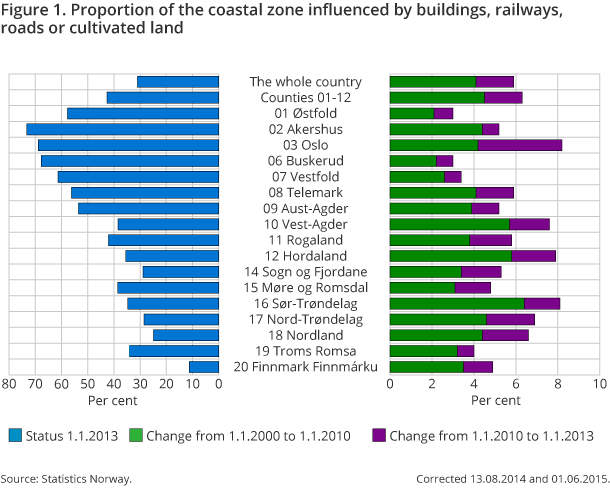
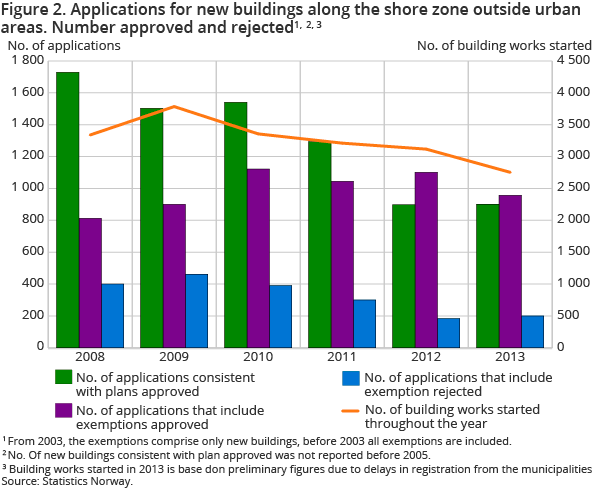
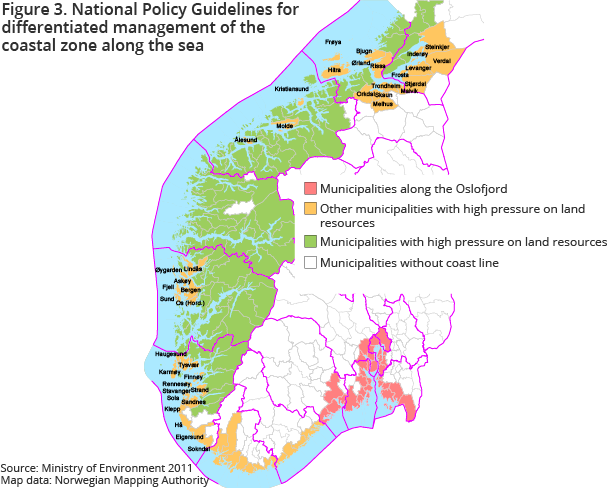
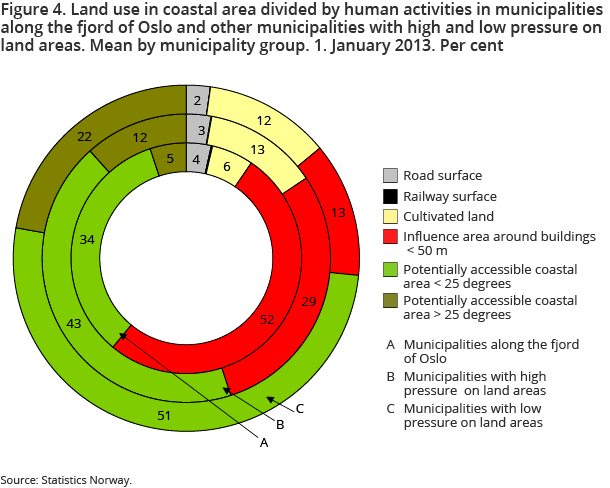
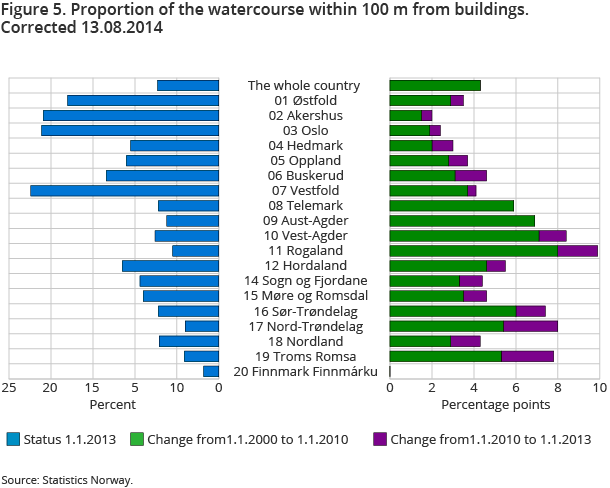
The number of building works started in the Norwegian coastal zone (land within 100 metres of the coastal line) decreased by a quarter between 2000 and 2013, according to the Norwegian Cadastre. In 2005, 21 per cent more building works were started than in 2012. A total of 4 422 building works were started in 2012 compared to 5 599 in 2005.
More permanent housing in the coastal zone
A general decline in building works started for all building types since 2009 has been registered. However, in the last two years, the number of permanent housing type building works started has increased by 7 per cent.
Almost all counties experienced a decrease in building activity in the coastal zone in 2012 compared to the previous year. The most important exception is Aust-Agder, where building works started have increased in the last two years. Figures for 2013 show that 253 building works were started in Aust-Agder in 2012 compared to 175 in 2011 and 152 in 2010. In spite of a significant decrease in building activity in Hordaland, this remains the county with most building works started in the coastal zone.
Most building works within the coastal zone were started in areas outside built-up areas. In 2012, only 3 117 new building works were started compared to 4 185 in 2006. Holiday homes (cabins) are the most common building type outside built-up areas in the coastal zone.
Estimates based on KOSTRA reporting for the period 2006-2010 show that local authorities received and approved an increasing number of exemption applications for construction in the coastal zone. During the same period, the number of applications rose from 1 163 to 1 512. In 2011, fewer applications were reported (1 345), and in 2012 the number of applications fell to 1 284. The percentage of granted exemptions shows approximately the same trend and has increased from 2006 (70 per cent) to nearly 86 per cent in 2012. However, the share of approved applications is still increasing and in 2011 was nearly 78 per cent. In the following years, fewer applications were reported, and in 2013, the number of applications was down to 1 157, which also follows the trend in construction activity.
Land use change reduces the opportunities for outdoor recreation
Building activity is the main driving force behind land use changes in the coastal zone. In order to reduce the building pressure on the coastal zone, government planning guidelines were issued in 2011.
Despite the reduction in building activity, the coastal areas potentially accessible for outdoor activities are still shrinking. Areas influenced by buildings, railways, roads and agricultural land are regarded as areas that are not potentially accessible. From 2000 to 2013, the proportion of the coastal zones affected by buildings, railways, roads and farmland increased by 72 379 decares. This change is more or less equal to Østfold and Akershus' total coastal area and meant that 31.1 per cent of the coastal area was influenced by buildings, railways, roads or agricultural land at the start of 2013.
On a local level, land use changes were greatest in the inner parts of the Oslo fjord. Areas influenced by buildings, railways, roads and agricultural land increased by 5.4 per cent in Oslo and 3.6 per cent in Akershus in the period 2000-2013. For Oslo, these land use changes resulted in only 2 square metres of the coastal zone that is not too steep for hiking being publicly accessible per inhabitant in the municipality.
Reduction in building activity also along the water courses
Until 2011, building activity had been increasing along the water courses of importance. In 2012, only 4 772 building works were started within a hundred metres of water courses of importance compared to 5 453 in 2010. With regard to the coastal zone, the proportion of watercourses close to buildings is greater in the Oslofjord region than in other parts of the country. However, in recent years the pressures on land have also increased in other parts of the country. In the period 2000 to 2013, the proportion of water courses within a hundred metres of a building has increased by more than ten per cent in Rogaland. This increase occurred despite the fact that a new Planning and Building Act came into force in July 2009, which includes a new section on restrictions in new building activities along water courses. See the Planning and Building Act.
Preliminary figures for building works started 2013 Open and readClose
Due to delays in the registration of building works from local authorities for 2013, national figures for 2013 are presented as preliminary. The figures in Statbank refer to the status as of 1 January of each year and include preliminary figures for 1 January 2014.
Contact
-
Tom Anders Engebakken
E-mail: tom.engebakken@ssb.no
tel.: (+47) 47 46 47 66
-
Jørn Kristian Undelstvedt
E-mail: jorn.kristian.undelstvedt@ssb.no
tel.: (+47) 94 50 68 64
